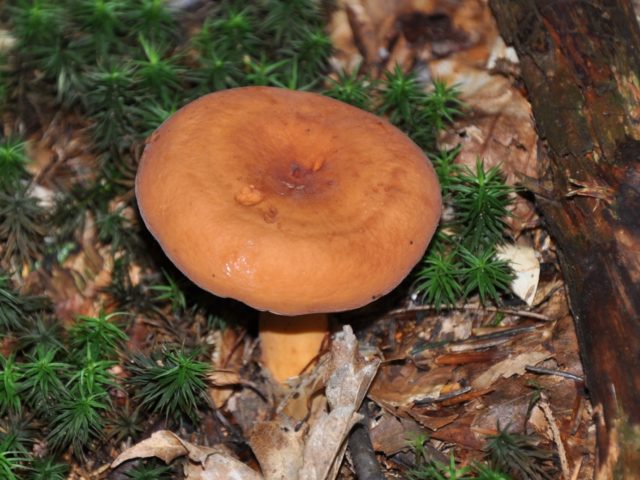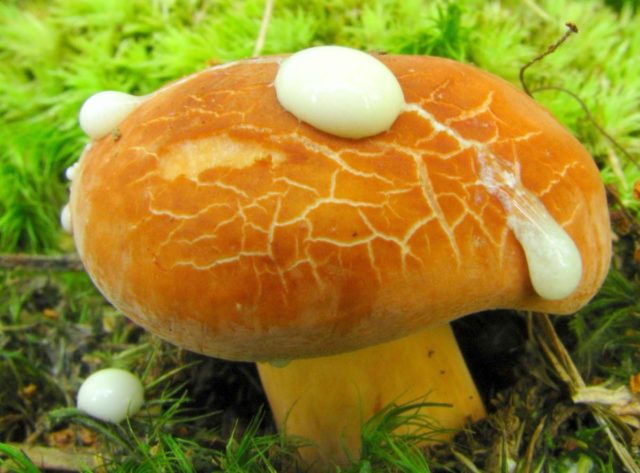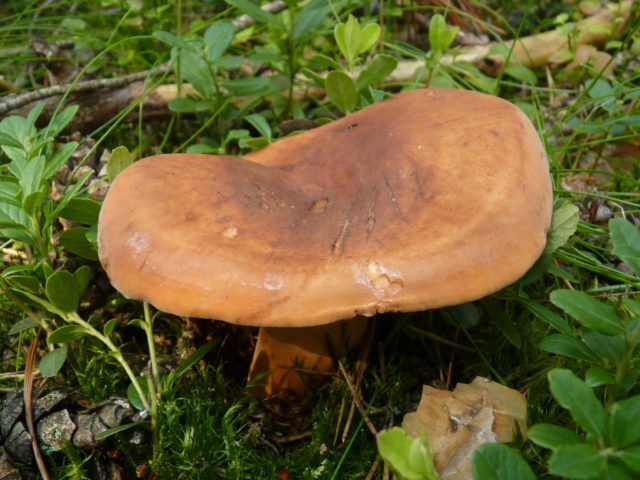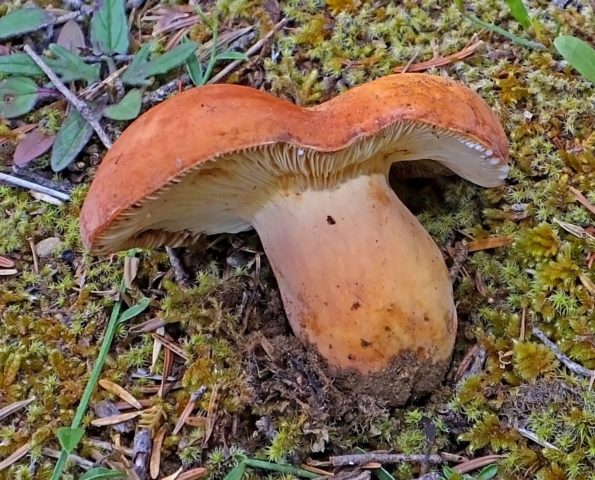Content
The miller mushroom is one of the popular lamellar species belonging to the Syroezhkovy family. Belongs to the conditionally edible group. It is in high demand among mushroom pickers, it is recommended for pickling or pickling.
What does a milky mushroom look like?
The species is known under several names: red-brown milk mushroom, smooth milkweed, milkweed, milkweed, grass rootlet, Lactarius volemus, the best milkman. The mushroom is dark brown or ocher in color. On the break or cut, white milky juice appears, which quickly darkens and thickens.
Description of the hat
At the beginning of the growing season, the cap is rounded, convex with curved edges. Over time, the shape becomes prostrate, the edges rise, and a slight concavity forms in the center.
Description of the cap of the milky mushroom shown in the photo is as follows:
- diameter - from 6 to 16 cm;
- the surface of young mushrooms is velvety, then dry, smooth, with a lack of moisture, cracks appear;
- the color is often uniform, in adult milk lovers, the central part may be darker;
- spore-bearing cream-colored plates, located rarely, descending to the peduncle, shortened plates are present along the edge of the cap on the lower side;
- light beige or white spore powder;
- the flesh is thick, tough, light yellow.
The taste is sweet, the mushroom can be eaten raw, the smell is nutty.
Leg description
In the photo of the milky mushroom, it is clearly visible that the leg is round, cylindrical, tapering towards the base.
Its length is 10 cm. The color of the upper part does not differ from the color of the lamellar layer, the lower one is darker in tone. The structure is rigid, the surface is smooth, covered with fine, dense pubescence.
Where and how it grows
The distribution area of the milk lover: from the South of Russia to the European part. The first specimens appear in July, the last collection is in October. The miller is the earliest mushroom in its family. It grows more often singly, less often in small groups in coniferous and mixed forests. Forms mycorrhiza with hazel, spruce or oak.
Is the spurge mushroom edible or not?
The milk lover is edible, has a sweetish taste, the milky juice is not bitter. Soaking the fruit bodies before processing is not required. Boil milkweed before frying to soften the flesh of the leg. Used for pickling or pickling. After processing, the mushrooms acquire firmness and are characterized by a high gastronomic value. In the West, dishes with a milk jug are classified as delicacies.
Salting red-brown milk mushrooms for the winter
The grinder is ideal for harvesting for the winter. Lamellar milkmen are considered the most delicious after salting. For processing, take young mushrooms not damaged by insects. It is better to leave old specimens for pickling, because in the process of pickling, the fruit body loses its elasticity and characteristic crunch.
Before salting, mushrooms are processed:
- The crop is poured, sorted by size.
- Remove the protective film from the surface of the cap and leg.
- The lamellar layer is cleaned from the remains of grass and litter.
- Rinse several times.
- To get rid of insects, soak in water with the addition of vinegar and salt. Kept in solution for 2-3 hours.
Hot salting method
To harvest mushrooms for the winter you will need:
- mushrooms - 5 kg;
- water - 5 l;
- bay leaf -10 pcs.;
- garlic - 2 heads;
- currant leaves - 15 pcs.;
- dill - 1 bunch (optional);
- salt - 10-12 tablespoons salt.
Cooking technology:
- For the brine, boil water in an enamel pan, add salt, bay leaf.
- The sorted and washed mushrooms are placed in boiling brine for 30 minutes.
- The mushrooms are removed from the brine and washed with water.
- Salt is poured into a container for salting, the mushrooms are laid out in layers. Sprinkle with salt, dill, garlic.
- The top is covered with currant leaves.
- Close with a lid, which is pressed with a load.
- After a few days, the mushrooms will start up juice, they can be transferred to sterilized jars and closed for the winter.
Store the workpieces in the basement.
Medicinal properties and contraindications of red-brown weight
The multicomponent chemical composition of the milk lover has found application in folk medicine. A natural product is valued for its ability to:
- block bad cholesterol;
- improve the state of microflora in the intestine;
- act as an antioxidant;
With an exacerbation of peptic ulcer or gastritis, with allergies, euphorbia is consumed in limited quantities.
Doubles and their differences
The milkshake has such a colorful appearance that it is difficult to confuse it with others. Milkweed has no poisonous counterparts. The hygrophoroid lactic acid is vaguely similar to the milk-lover.
In the double, the color of the cap is uneven, with centric circles, rarely dry. Milky sap does not change color from contact with oxygen. The plates are located less frequently than on milkweed. In terms of nutritional value, the species are the same.
Conclusion
The miller fungus grows from the middle of summer, it appears in mixed and coniferous forests as one of the first millers. Bright brown spurge is used for pickling or pickling. The beneficial composition of the fruiting body has found application in traditional medicine recipes.













